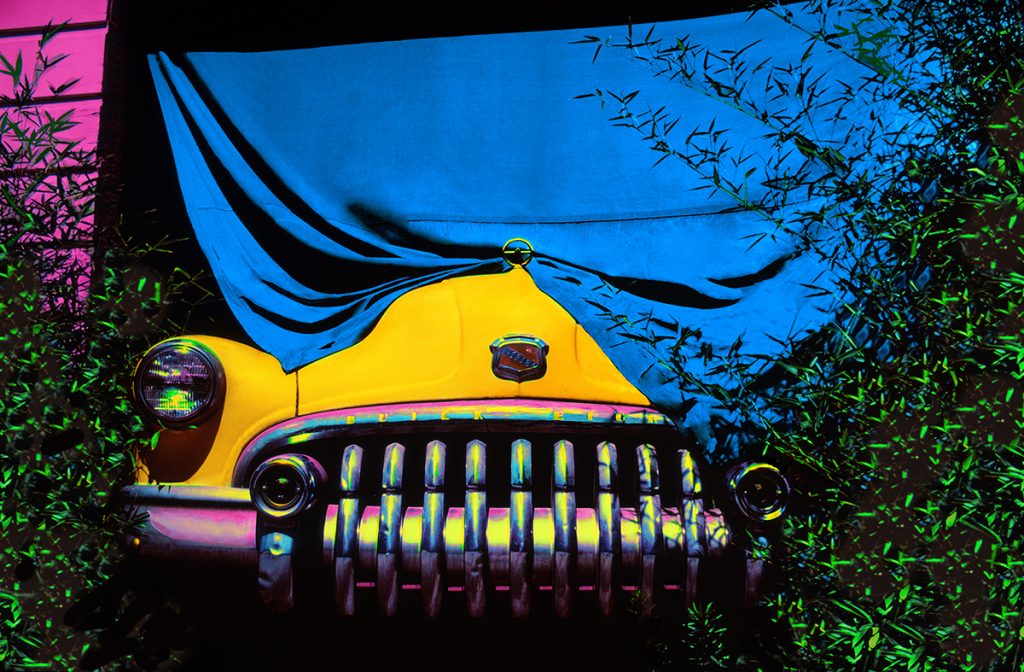Jane Gottlieb is an artist who has spent her life expressing a deep love for color, form, and expression. Raised in Los Angeles, she began her creative path with painting before turning toward photography. Yet she never stayed within one medium for long. Over time, she developed a process that merged the painter’s brush with the photographer’s eye, hand-painting her own images with bold, saturated tones. More than thirty years ago, she started working with Cibachrome prints, transforming photographs into something between reality and imagination. This became her signature—a blending of mediums that made her art instantly recognizable. Her work carries the intensity of Los Angeles itself, with its freeways, sunsets, and relentless energy. What began as a painter’s search for color turned into a career that redefined how an artist might use photography not as a record of the world but as a canvas for reinvention.
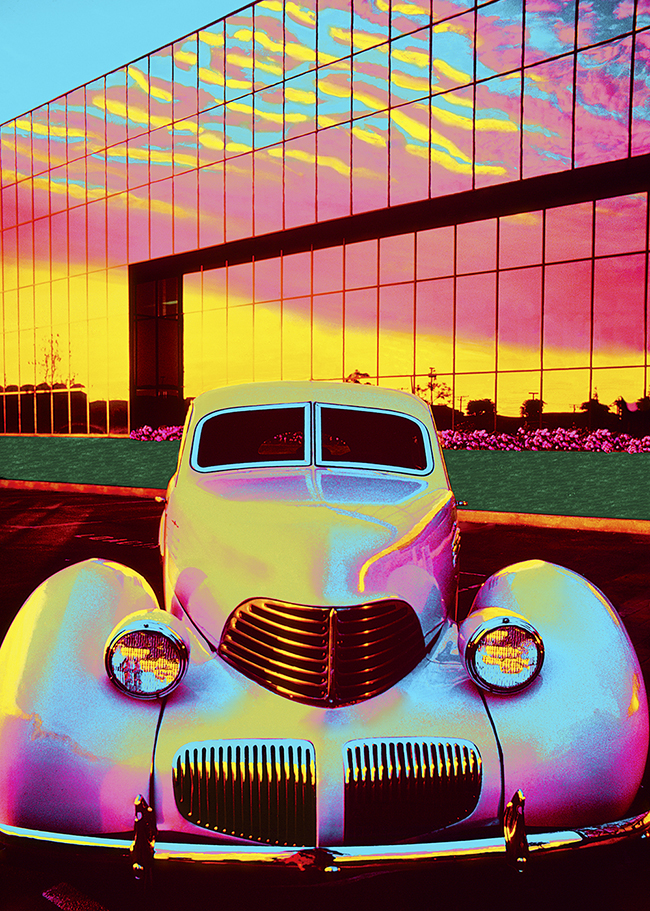
A Lifelong Exploration
Jane Gottlieb’s career shows how an artist can hold fast to an obsession with color while allowing her process to change over decades. She never abandoned painting, but when photography entered her life, it gave her another language. Instead of choosing one over the other, she found a way to combine them. A photograph might capture the frame of a car, a building, or a street, but for her the image was only the beginning. By painting directly onto prints, she heightened the hues until they became surreal—worlds that echo memory rather than mirror reality.
Her upbringing in Los Angeles shaped much of this vision. The city was a place of constant light, endless cars, and a culture deeply tied to both freedom and fantasy. She carried this into her art. Where some see a photograph as a way to freeze time, Gottlieb uses it as a foundation for memory—personal, saturated, and slightly unreal.
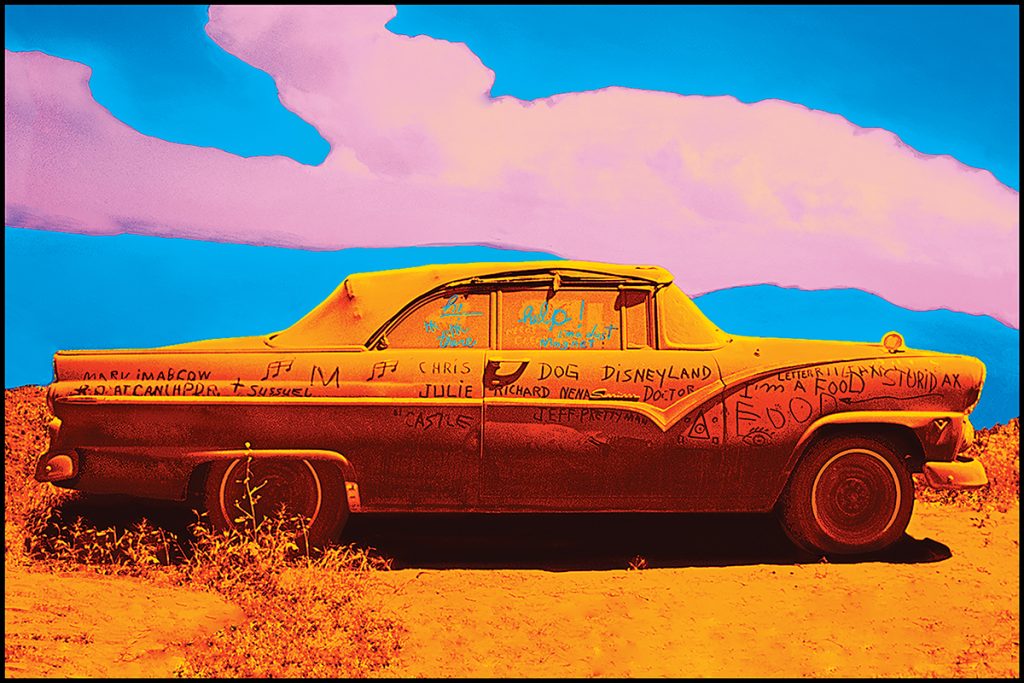
Reinventing Photography
When Gottlieb began hand-painting on Cibachrome prints, she was doing something unusual in the photography world. The process was slow and painstaking. Each print became unique, transformed by hand into a singular object. In this sense, she treated photography not as reproducible but as one-of-a-kind, closer to painting. Over time, this approach gave her a recognizable aesthetic—vivid colors, dreamlike compositions, and images that felt both nostalgic and futuristic.
The work resonated because it pushed against the limits of both mediums. Photographers saw it as painterly. Painters saw it as photographic. Gottlieb occupied the space between. Her art refused to choose sides. This tension remains one of the reasons her work endures.
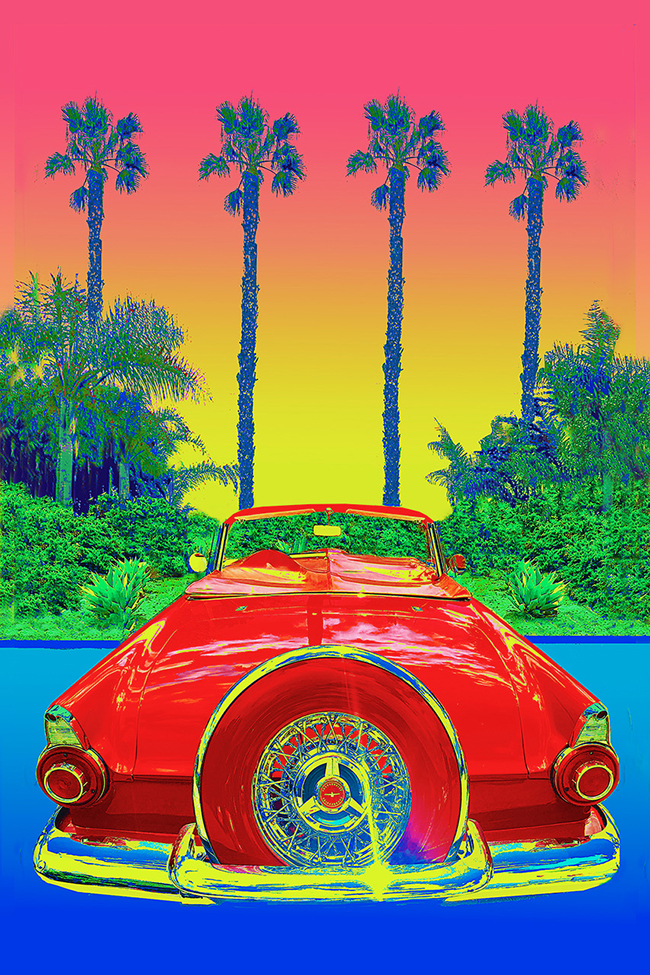
The Pulse of Los Angeles
At the heart of Gottlieb’s art is Los Angeles itself. The city is more than backdrop—it is subject, memory, and myth. The freeways, the endless horizon, the culture of driving and cruising all appear in her images. Her work captures a sense of place that is both personal and universal. For those who grew up in L.A., her art stirs nostalgia. For those who did not, it offers an imagined vision of the city as a dream of speed and light.
This is most evident in her series JOY RIDES, where cars, color, and memory collide. To understand Gottlieb is to see how L.A. lives in her imagination and how she channels it into something both familiar and heightened.
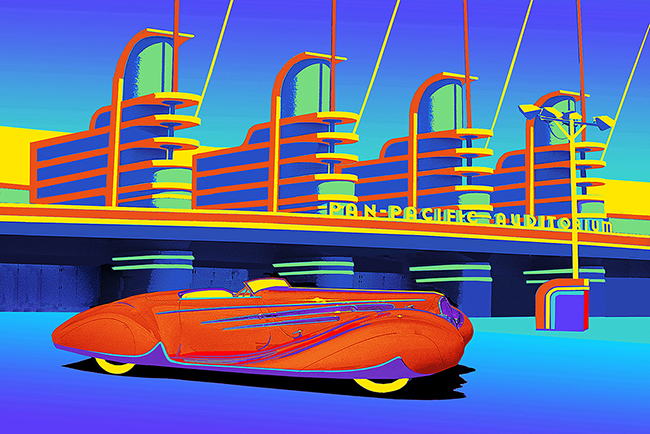
Jane Gottlieb’s JOY RIDES
As a child of Los Angeles, Jane Gottlieb grew up surrounded by cars. They were not just transportation—they were symbols of freedom. Cruising through the city was part of life, a ritual of motion and independence. For her, the car was tied to memory, to youth, and to the unique rhythm of the city.
JOY RIDES reflects this relationship. The series is less about specific cars and more about what they represent. In these images, cars are icons, standing in for the freedom of movement that defined Los Angeles in the mid-20th century. Fifty years ago, driving meant escape, possibility, and identity. Gottlieb channels this feeling through photographs that she then transforms with her trademark use of intense color.
Nostalgia and Transformation
What makes JOY RIDES compelling is its balance between nostalgia and reinvention. The cars may be old, the streets long changed, but through color Gottlieb restores them to something larger than memory. She saturates hues until they move beyond realism into the realm of imagination. Reds blaze, blues vibrate, yellows feel electric. The result is not a record of the past but an interpretation of it—a Los Angeles that may never have existed but feels true to memory.
By doing this, she bridges time. The city she knew as a young woman is gone, yet her images keep its spirit alive. They are not photographs of cars so much as they are portraits of freedom itself.
A Lost, Not Forgotten Los Angeles
The Los Angeles of JOY RIDES is both lost and present. Gottlieb acknowledges that the city has changed, that the culture of cruising is different now. But through her art, she insists that the feeling endures. The intensified colors create an almost unreal atmosphere, suggesting that memory itself is vivid, distorted, yet meaningful. This dreamlike L.A. is her own, but it resonates with anyone who has experienced a place that no longer exists as it once did.
The Power of Color
In JOY RIDES, color is the true subject. The automobiles are vehicles, yes, but they also become surfaces for her chromatic imagination. Gottlieb’s practice of pushing color beyond the natural reminds us that art is not about replication but transformation. Her Los Angeles is not meant to be documentary; it is meant to be felt.
The cars become emblems. The streets become canvases. The entire city turns into an image of freedom, memory, and longing. In this way, JOY RIDES is both deeply personal and widely accessible. It captures not just her own story but the story of a culture, a city, and a time that continues to echo in the present.

